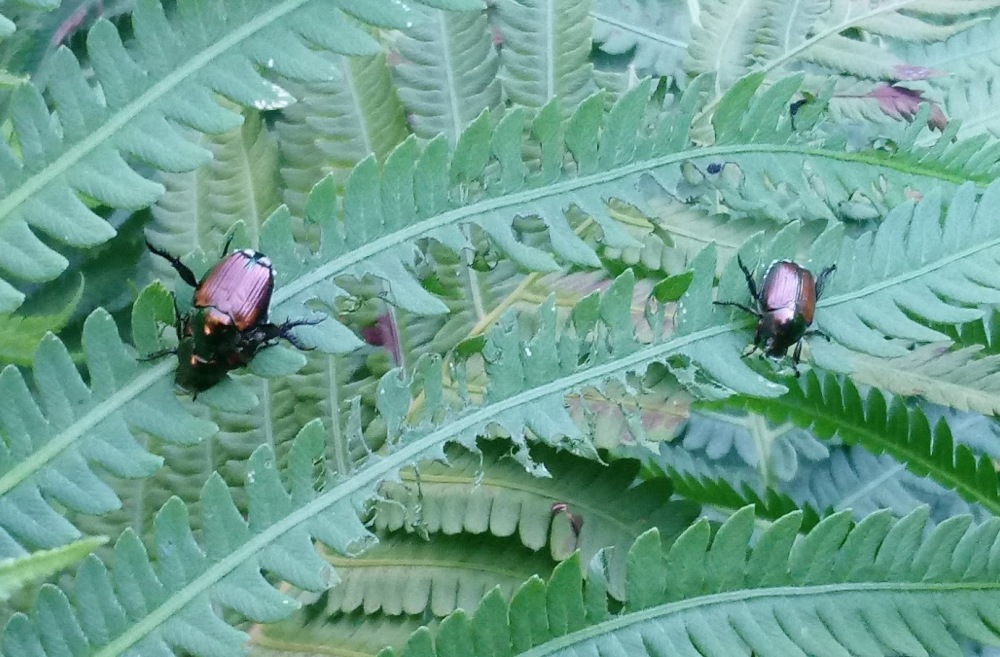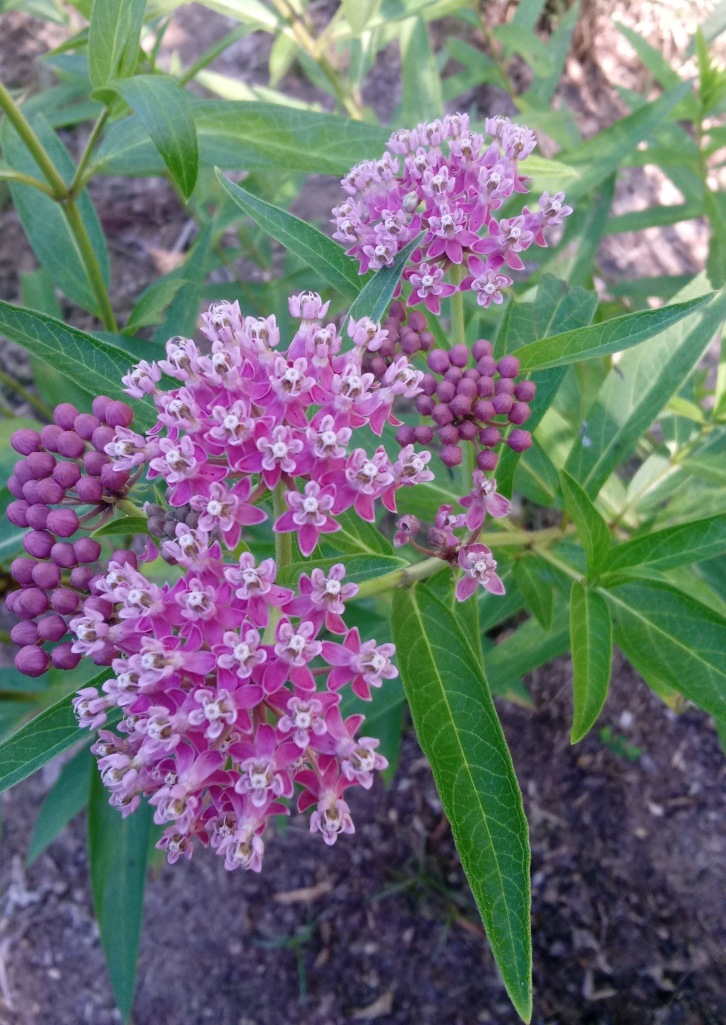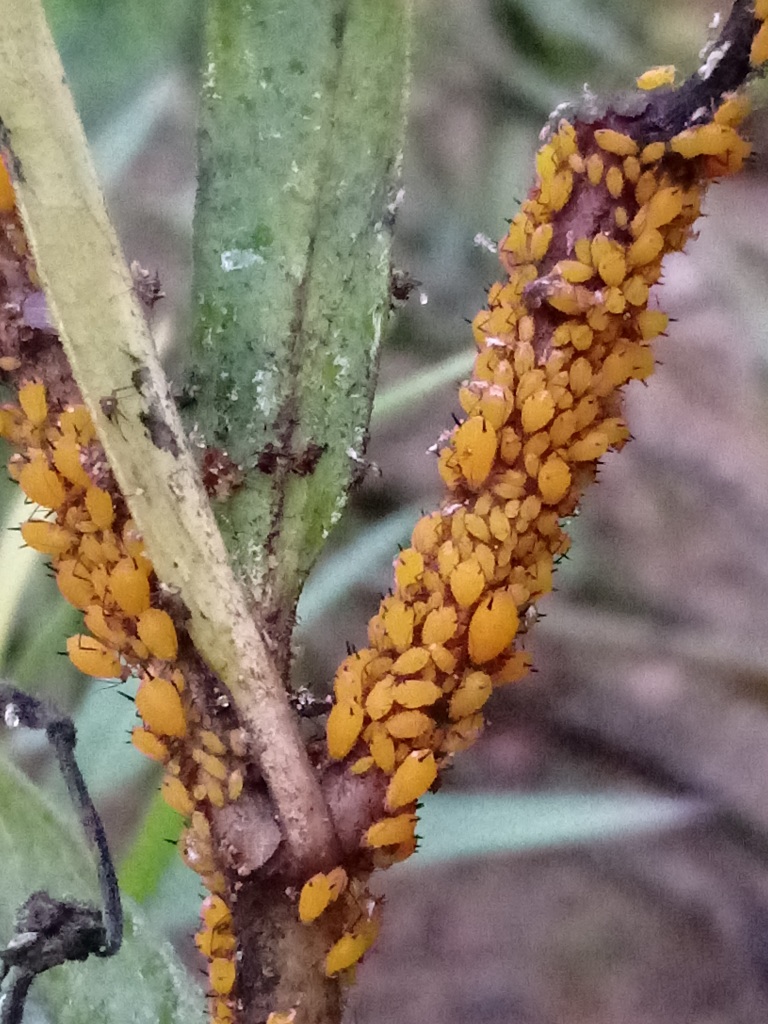In a diverse garden where no insecticides are used, the interconnections of every level of wildlife become more apparent. Or at least, I presume that interactions occur, and why wouldn’t they? There is no doubt that the number of birds has increased over the years as the density of trees and shrubs has increased, and Japanese beetles (below) and various chewing caterpillars seem fewer. I suppose the two must be related.

I notice that the caterpillars have not defoliated the Catalpa (Catalpa speciosa) this year. Each of the past few years the tree has nearly been stripped of foliage, but no caterpillars were seen this year, which is probably a good thing since the leaves of the tree are noticeably smaller. I presume that a vigorous tree like the Catalpa can be stripped of leaves annually and not suffer, but this can’t be so. It’s likely that caterpillars will be back some time in the future, so this year is the one when the Catalpa can regain its vigor.
It’s been a few years since the redbuds (Cercis canadensis ‘Silver Cloud’, below) have been partially defoliated, which typically begins in mid summer (now), but today I see no sign of the tiny tent caterpillars. The first few times the caterpillars appeared I was concerned, but the defoliation didn’t get too far along until mid September, a few weeks before leaves would be dropping anyway. So, I concluded this was not a big deal. 
I am not observant, or patient enough to witness birds eating caterpillars or beetles, but of course they do to some extent. A necessary part of this equation is that the gardener must be willing to suffer through some damage from insects, and in this large garden there’s always another tree or another flower to distract from the few that are less than perfect. Here, the trade off is an easy one.
The swamp milkweeds (Asclepias incarnata, above) are in full bloom, so an infestation of aphids (below) is not far off. I have little doubt that aphids will not have an off year. As long as there are milkweeds, aphids will be here to cover stems. A few years ago, a beetle appeared that made a small dent in the population, but there were far too many and a few weeks later the damage was done.  Certainly, there are non lethal methods of getting rid of aphids, but I’m not going to pick them off or drag hoses a couple hundred feet to knock them off the milkweeds, that are past bloom, and why bother? Probably, I should chop the stems and toss them in the compost pile before they turn brown, but it doesn’t hinder the milkweeds’ growth for next year, so I’ll observe, and maybe the beetles will be back again.
Certainly, there are non lethal methods of getting rid of aphids, but I’m not going to pick them off or drag hoses a couple hundred feet to knock them off the milkweeds, that are past bloom, and why bother? Probably, I should chop the stems and toss them in the compost pile before they turn brown, but it doesn’t hinder the milkweeds’ growth for next year, so I’ll observe, and maybe the beetles will be back again.
You know, I never use chemicals in my garden, not because I dislike them, but because with proper horticulture, they are not necessary. My peach tree has been infested with peach leaf curl annually since 1985, but has never been sprayed. I just prune it so that it regenerates more vigorously than the disease. Proper pruning keeps the roses more vigorous than the aphids, and keeps them well aired out too.